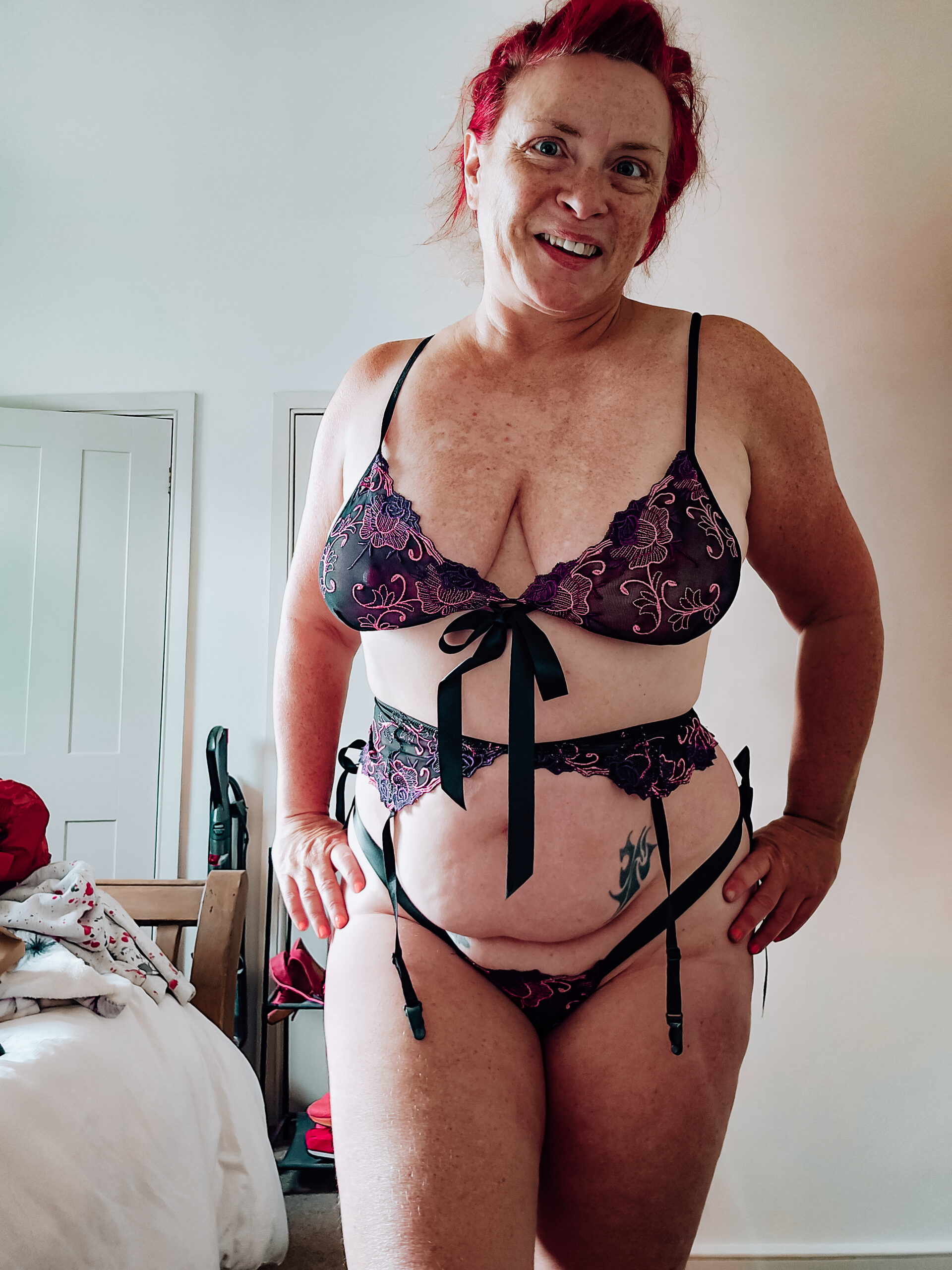Exploring The World Of Pansexuality And How It Challenges Traditional Norms
Understanding Pansexuality
Pansexuality, a term gaining increasing recognition, encompasses a spectrum of attraction that extends beyond conventional gender boundaries. This exploration delves into the sounding sex toys multifaceted nature of pansexual identities, shedding light on the experiences of individuals who find themselves attracted to people regardless of their gender expression or identity.
Defining Pansexual Identity
Pansexuality, a term gaining increasing recognition, encompasses a spectrum of attraction that extends beyond conventional gender boundaries. This exploration delves into the multifaceted nature of pansexual identities, shedding light on the experiences of individuals who find themselves attracted to people regardless of their gender expression or identity.
- At its core, pansexuality affirms that romantic and/or sexual attraction is not confined by societal norms or expectations about gender.
- Pansexual individuals are attracted to people of all genders, including men, women, transgender individuals, non-binary people, and those who identify outside the gender binary.
- It’s important to recognize that pansexuality is distinct from bisexuality. While both involve attraction to more than one gender, pansexuality encompasses a broader understanding of gender, often including identities beyond the traditional male/female dichotomy.
Distinguishing Pansexuality from Other Sexual Orientations
Pansexuality challenges traditional notions of sexuality by recognizing that attraction can exist outside of rigid gender categories. Pansexual individuals experience romantic and/or sexual feelings for people regardless of their gender identity or expression. This means they are attracted to men, women, transgender individuals, non-binary people, and anyone else who falls outside the confines of traditional gender binaries.
Understanding the nuances of pansexuality is crucial for fostering inclusivity and respect. It’s important to distinguish it from bisexuality, as while both encompass attraction to more than one gender, pansexuality often includes a broader understanding of gender, acknowledging identities that extend beyond the male/female binary.
Historical Context of Pansexuality
Pansexuality is an orientation where individuals experience romantic and/or sexual attraction to people regardless of their gender identity or expression. This means pansexual individuals are attracted to men, women, transgender individuals, non-binary people, and anyone else who doesn’t fit into traditional male/female categories.
The term “pansexuality” itself comes from the Greek word “pan,” meaning “all.” This reflects the core principle of pansexuality: attraction is not limited by gender.
Historically, concepts of sexuality have often been confined to binary systems of male and female. However, throughout history, there have always been individuals who did not fit neatly into these categories. While the term “pansexual” gained prominence in the late 20th century, similar experiences and expressions of attraction have likely existed for centuries.
The rise of LGBTQ+ activism in the mid-20th century played a crucial role in bringing more visibility to diverse sexual orientations, including pansexuality. This increased awareness has led to greater understanding and acceptance of pansexual identities today.
Challenging Traditional Norms in Language
Pansexuality challenges traditional norms by embracing a fluid and inclusive approach to attraction, extending beyond the confines of rigid gender categories.
Heteronormative Language and its Limitations
Heteronormative language reinforces traditional ideas about sexuality, often assuming that people are either heterosexual or homosexual and adhering to binary gender roles. This can create an environment where individuals who don’t fit these norms feel excluded and marginalized. Pansexuality challenges this heteronormativity by explicitly rejecting the notion that attraction is limited to a specific set of gender categories.
For instance, using language that implies all people are heterosexual or that assumes someone’s gender identity based on their appearance can be harmful to pansexual individuals. It’s crucial to use inclusive language that acknowledges the diverse range of sexual orientations and gender identities.
By embracing language that is sensitive and inclusive of pansexual experiences, we can create a more welcoming and equitable society for everyone.
The Evolution of Inclusive Language
Pansexuality, a term gaining increasing recognition, encompasses a spectrum of attraction that extends beyond conventional gender boundaries. This exploration delves into the multifaceted nature of pansexual identities, shedding light on the experiences of individuals who find themselves attracted to people regardless of their gender expression or identity.
At its core, pansexuality affirms that romantic and/or sexual attraction is not confined by societal norms or expectations about gender. Pansexual individuals are attracted to people of all genders, including men, women, transgender individuals, non-binary people, and those who identify outside the gender binary.
It’s important to recognize that pansexuality is distinct from bisexuality. While both involve attraction to more than one gender, pansexuality encompasses a broader understanding of gender, often including identities beyond the traditional male/female dichotomy.

Pansexuality challenges traditional notions of sexuality by recognizing that attraction can exist outside of rigid gender categories. Pansexual individuals experience romantic and/or sexual feelings for people regardless of their gender identity or expression. This means they are attracted to men, women, transgender individuals, non-binary people, and anyone else who falls outside the confines of traditional gender binaries.
Understanding the nuances of pansexuality is crucial for fostering inclusivity and respect. It’s important to distinguish it from bisexuality, as while both encompass attraction to more than one gender, pansexuality often includes a broader understanding of gender, acknowledging identities that extend beyond the male/female binary.
Pansexuality is an orientation where individuals experience romantic and/or sexual attraction to people regardless of their gender identity or expression. This means pansexual individuals are attracted to men, women, transgender individuals, non-binary people, and anyone else who doesn’t fit into traditional male/female categories.
The term “pansexuality” itself comes from the Greek word “pan,” meaning “all.” This reflects the core principle of pansexuality: attraction is not limited by gender.
Historically, concepts of sexuality have often been confined to binary systems of male and female. However, throughout history, there have always been individuals who did not fit neatly into these categories. While the term “pansexual” gained prominence in the late 20th century, similar experiences and expressions of attraction have likely existed for centuries.
The rise of LGBTQ+ activism in the mid-20th century played a crucial role in bringing more visibility to diverse sexual orientations, including pansexuality. This increased awareness has led to greater understanding and acceptance of pansexual identities today.
Pansexuality challenges traditional norms by embracing a fluid and inclusive approach to attraction, extending beyond the confines of rigid gender categories. Heteronormative language reinforces traditional ideas about sexuality, often assuming that people are either heterosexual or homosexual and adhering to binary gender roles. This can create an environment where individuals who don’t fit these norms feel excluded and marginalized. Pansexuality challenges this heteronormativity by explicitly rejecting the notion that attraction is limited to a specific set of gender categories.
For instance, using language that implies all people are heterosexual or that assumes someone’s gender identity based on their appearance can be harmful to pansexual individuals. It’s crucial to use inclusive language that acknowledges the diverse range of sexual orientations and gender identities.
By embracing language that is sensitive and inclusive of pansexual experiences, we can create a more welcoming and equitable society for everyone.
Creating a More Inclusive Vocabulary for Gender and Sexuality
Pansexuality challenges traditional norms in language by pushing against the confines of binary gender categories. It requires us to broaden our understanding of attraction and identity, moving beyond assumptions about who someone is attracted to based on their perceived gender.
Inclusive language becomes crucial when discussing pansexuality. Terms like “partner” or “significant other” can be more inclusive than assuming a person’s gender based on their relationship status. Additionally, using gender-neutral language when referring to people’s attractions avoids perpetuating stereotypes and respects the fluidity of gender identity.
By adopting a more expansive and inclusive vocabulary, we can create a linguistic landscape that better reflects the diversity of human experience and fosters a more equitable and accepting society for all.
Cultural Representations and Social Perceptions
Cultural representations shape how societies perceive individuals and groups. These representations, often embedded in language, media, and social norms, can reinforce existing power structures or challenge traditional norms. This exploration delves into the world of pansexuality, examining how it challenges conventional notions of sexuality and gender, and how these shifts are reflected in language and cultural understanding.
Positive Portrayals of Pansexual Characters in Media

Positive portrayals of pansexual characters in media are crucial for fostering greater visibility and understanding of pansexuality.
When pansexual characters are depicted authentically and respectfully, it helps to dismantle harmful stereotypes and normalize diverse expressions of sexuality. This representation can be particularly impactful for young people who may be exploring their own identities or struggling with feelings of isolation.
Positive portrayals can challenge traditional narratives that limit individuals to rigid gender roles and heteronormative expectations. They showcase the beauty and complexity of human relationships beyond binary constructs, creating a more inclusive and representative world on screen.
One important aspect is avoiding tropes that reduce pansexual characters to mere stereotypes or caricatures. It’s essential to portray them as well-rounded individuals with diverse personalities, motivations, and experiences, just like any other character.
Misconceptions and Negative Stereotypes
Cultural representations have a profound impact on shaping social perceptions. When it comes to sexuality, particularly orientations like pansexuality, these representations can either reinforce harmful stereotypes or contribute to greater understanding and acceptance.
Negative stereotypes surrounding pansexuality often stem from a lack of awareness and exposure to diverse experiences. Some common misconceptions include the belief that pansexuality is a passing phase or a trend, rather than a genuine and enduring sexual orientation. There’s also a tendency to conflate pansexuality with other orientations, such as bisexuality, leading to confusion and inaccurate portrayals. These stereotypes can contribute to prejudice and discrimination against pansexual individuals, making them feel marginalized and misunderstood.
It is crucial to challenge these misconceptions and promote accurate representations of pansexuality through diverse media, educational initiatives, and open conversations. By highlighting the lived experiences of pansexual people, showcasing their stories, and promoting positive role models, we can help create a more inclusive and accepting society where individuals feel comfortable expressing their true identities without fear of judgment or harm.
Advocating for Visibility and Understanding
Cultural representations wield significant power in shaping how societies perceive and understand various facets of life, including sexuality. When it comes to pansexuality, these representations are crucial for fostering visibility, challenging stereotypes, and promoting inclusivity.
Positive portrayals of pansexual characters in media can significantly impact social perceptions. Representing pansexual individuals authentically and respectfully in films, television shows, literature, and other forms of media helps to normalize their experiences and break down harmful stereotypes. Seeing diverse and relatable characters who are pansexual can be incredibly empowering for individuals who identify with this orientation, fostering a sense of belonging and validation.
Accurate and nuanced representations are essential. Avoiding reductive tropes or portraying pansexuality solely through the lens of shock value is crucial. Pansexual characters should be depicted as complex individuals with their own unique stories, struggles, and triumphs, just like any other character.
Furthermore, it’s important to ensure that pansexual representation extends beyond tokenism or limited storylines. Pansexual characters should be integrated into narratives in a meaningful way, exploring their experiences with depth and authenticity. This can involve showcasing their relationships, challenges, and triumphs within a broader societal context, helping viewers develop a more comprehensive understanding of pansexuality.
Challenging negative stereotypes is equally important. Many misconceptions about pansexuality arise from a lack of understanding or exposure to diverse experiences. Open dialogue, educational initiatives, and accurate information-sharing are crucial for combating prejudice and promoting acceptance.
Personal Experiences and Perspectives
Exploring the world of pansexuality means delving into a realm where attraction transcends conventional boundaries. This journey invites us to challenge traditional notions of sexuality and embrace a spectrum of identities that extend beyond the confines of rigid gender categories.
Coming to Terms with Pansexuality
Coming to terms with being pansexual is a deeply personal experience. It involves introspection, self-discovery, and often, a process of questioning long-held beliefs about oneself and societal norms around attraction. For some, it might be a gradual realization, a slow dawning of understanding as they encounter new people and experiences that challenge their previous assumptions. Others may have an epiphany, a moment of clarity where everything clicks into place.
No matter the path, navigating this journey can be both empowering and challenging. It requires courage to confront internalized biases and societal expectations that might push individuals towards rigid binary classifications. It’s about accepting oneself fully and embracing the fluidity of attraction.
The process of coming to terms with pansexuality often involves a sense of liberation. Realizing that attraction is not confined by gender allows individuals to explore their desires without feeling limited or defined by societal norms. It opens up a world of possibilities and connections that might have previously seemed inaccessible.
It’s important to remember that everyone’s experience is unique. There is no right or wrong way to come to terms with pansexuality. Support from friends, family, or online communities can be invaluable during this process. Connecting with others who share similar experiences can provide validation, understanding, and a sense of belonging.
Ultimately, embracing pansexuality is about celebrating the diversity of human experience and recognizing that love and attraction can exist in myriad forms beyond traditional boundaries.
Building a Supportive Community
Cultural representations wield significant power in shaping how societies perceive and understand various facets of life, including sexuality. When it comes to pansexuality, these representations are crucial for fostering visibility, challenging stereotypes, and promoting inclusivity.
Positive portrayals of pansexual characters in media can significantly impact social perceptions. Representing pansexual individuals authentically and respectfully in films, television shows, literature, and other forms of media helps to normalize their experiences and break down harmful stereotypes. Seeing diverse and relatable characters who are pansexual can be incredibly empowering for individuals who identify with this orientation, fostering a sense of belonging and validation.
Accurate and nuanced representations are essential. Avoiding reductive tropes or portraying pansexuality solely through the lens of shock value is crucial. Pansexual characters should be depicted as complex individuals with their own unique stories, struggles, and triumphs, just like any other character.
Furthermore, it’s important to ensure that pansexual representation extends beyond tokenism or limited storylines. Pansexual characters should be integrated into narratives in a meaningful way, exploring their experiences with depth and authenticity. This can involve showcasing their relationships, challenges, and triumphs within a broader societal context, helping viewers develop a more comprehensive understanding of pansexuality.
Challenging negative stereotypes is equally important. Many misconceptions about pansexuality arise from a lack of understanding or exposure to diverse experiences. Open dialogue, educational initiatives, and accurate information-sharing are crucial for combating prejudice and promoting acceptance.
Exploring the world of pansexuality means delving into a realm where attraction transcends conventional boundaries. This journey invites us to challenge traditional notions of sexuality and embrace a spectrum of identities that extend beyond the confines of rigid gender categories.

Coming to terms with being pansexual is a deeply personal experience. It involves introspection, self-discovery, and often, a process of questioning long-held beliefs about oneself and societal norms around attraction. For some, it might be a gradual realization, a slow dawning of understanding as they encounter new people and experiences that challenge their previous assumptions. Others may have an epiphany, a moment of clarity where everything clicks into place.
No matter the path, navigating this journey can be both empowering and challenging. It requires courage to confront internalized biases and societal expectations that might push individuals towards rigid binary classifications. It’s about accepting oneself fully and embracing the fluidity of attraction.
The process of coming to terms with pansexuality often involves a sense of liberation. Realizing that attraction is not confined by gender allows individuals to explore their desires without feeling limited or defined by societal norms. It opens up a world of possibilities and connections that might have previously seemed inaccessible.
It’s important to remember that everyone’s experience is unique. There is no right or wrong way to come to terms with pansexuality. Support from friends, family, or online communities can be invaluable during this process. Connecting with others who share similar experiences can provide validation, understanding, and a sense of belonging.
Ultimately, embracing pansexuality is about celebrating the diversity of human experience and recognizing that love and attraction can exist in myriad forms beyond traditional boundaries.
Navigating Relationships as a Pansexual Individual
Navigating relationships as a pansexual individual can be both fulfilling and challenging.
One key aspect is open communication with partners. Being upfront about one’s pansexuality from the start fosters honesty and understanding within the relationship. It allows for clear expectations and helps partners feel comfortable navigating any complexities that may arise.
Pansexual individuals might encounter assumptions or misunderstandings from potential partners who are unfamiliar with this orientation. It’s important to patiently educate and clarify, emphasizing that attraction extends beyond traditional gender binaries. This can involve sharing personal experiences and resources that provide further understanding of pansexuality.
Respectful boundaries are crucial in any relationship, regardless of sexual orientation. Pansexual individuals have the right to define their own boundaries regarding physical intimacy and emotional connection. These boundaries should be honored by partners, ensuring a safe and comfortable environment for all involved.
Dating within the LGBTQ+ community can offer unique advantages. There’s often a greater sense of understanding and acceptance within these communities, as individuals are more likely to be familiar with diverse sexual orientations and gender identities.
It’s important to remember that not everyone within the LGBTQ+ community identifies as pansexual. Respecting individual identities and preferences within this community is essential.
Navigating relationships as a pansexual individual requires self-awareness, communication, and a willingness to educate others. By embracing these principles, pansexual individuals can build fulfilling and meaningful relationships based on mutual respect, understanding, and acceptance.
Get the full context here
Get the whole story now
- Why Are My 11 Lines So Deep? - November 16, 2025
- What Is Tear Trough Filler - November 13, 2025
- Weed Infused Sodas With The Best Afterglow - November 12, 2025
